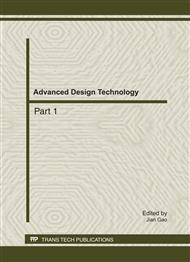[1]
Eugene G. Hill. Overview of Federal Aviation Administration Aviation Safety Research for Aircraft Icing[R]. AIAA 2006-81,2006.
DOI: 10.2514/6.2006-81
Google Scholar
[2]
CHANG Shi-nan, AI Su-xiao, CHEN Yu. Simulation Approach of Ice Accretion on Airfoil Surface[J]. Journal of System Simulation. 2008,20(10):2538-2545.
Google Scholar
[3]
ZHANG Dalin, CHEN Wei. Numerical Simulation of Rime Ice Accretion Process on Airfoil[J].Journa l of Aerospace Power, 2004.19(1):137-141.
Google Scholar
[4]
Wang Ming-feng, Wang Li-xin, Huang Cheng-tao. Computational effects of ice accretion on aircraft longitudinal stability and control[J]. Journal of Beijing University of Aeronautics and Astronautics. 2008.34(5):592-595.
Google Scholar
[5]
DU Yan-xia, GUI Ye-wei, XIAO Chun-hua. Investigation of Heat Transfer in Aircraft Icing[J].Journal of Engineering Thermophysics. 2009,30(11):1923-1925.
Google Scholar
[6]
Guilherme Araújo Lima da Silva. Numerical Simulation of Airfoil Thermal Anti-Ice Operation Part 1: Mathematical Modeling[J]. Journal of Aircraft. Vol. 44, No.2, 2007,pp.627-734.
DOI: 10.2514/1.544
Google Scholar
[7]
S. Thomas, R. Cassoni, C. Mac Arthur. Aircraft anti-icing and deicing techniques and modeling[R]. AIAA 1996-0396,1996.
DOI: 10.2514/6.1996-390
Google Scholar
[8]
P. R. Louchez, S. Bernardin, J.L. Laforte. Physical Properties of Aircraft De-icing and Anti-IcingFluids[R]. AIAA 1998-0575,1998.
DOI: 10.2514/6.1998-575
Google Scholar
[9]
ZHAO Zhen-guo. Discussion on Evaporation Coefficient of Water surface[J].SHUILI XUEBAO,2009,40(12):1440-1443.
Google Scholar


